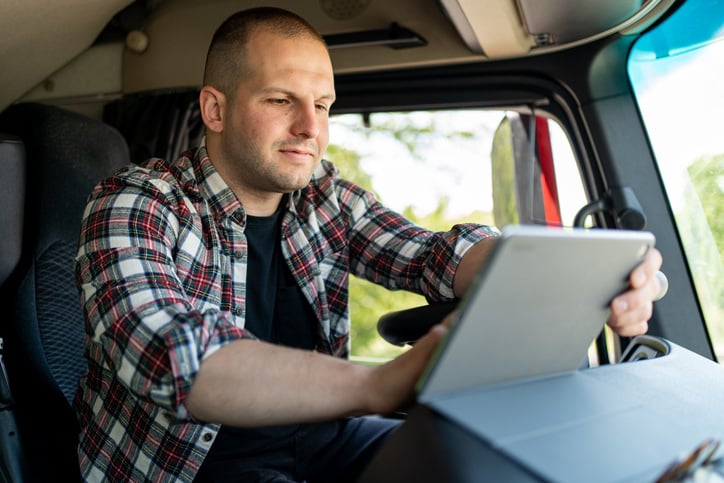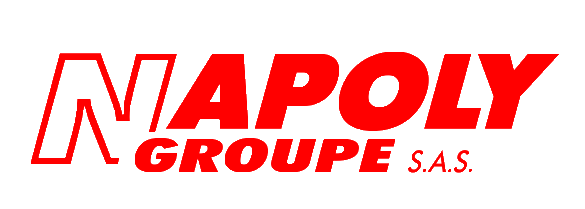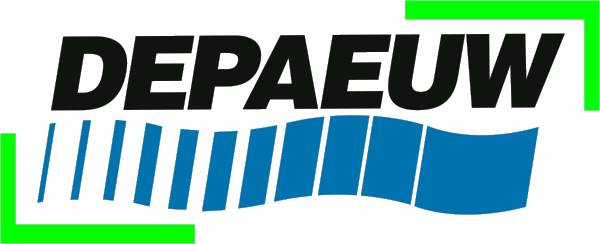Enhanced regulatory compliance
Benefit from real-time monitoring of driving and service times, reducing the risk of penalties and guaranteeing optimum management of your drivers' production times.
Adopt on-board computing to optimize your operations. Real-time monitoring, simplified coordination and cost reduction: tailor-made solutions to boost your performance with Sinari expertise.
.jpg?width=2048&height=1366&name=iStock-1359026834%20(1).jpg)
On-board computing is transforming road transport by connecting operations with drivers and vehicles in real time. Thanks to advanced alerts, it guarantees compliance with regulations and limits infringements (connection of tachographs and driver cards).
Integrated with a TMS or Sinari Time Management web portal, it optimizes schedules, facilitates decision-making and reduces fuel consumption. By simplifying operations, it improves efficiency and cuts costs.
In-vehicle computing is an essential solution for meeting today's transport challenges. It improves management, enhances safety and optimizes performance thanks to real-time data and connected systems.


On-board computing optimizes transport management with connected, intelligent solutions. By exploiting real-time data, it improves productivity, reduces fuel consumption and ensures regulatory compliance. Integrated with the TMS and the Sinari Time Management web portal, it centralizes driver cards and job cards for optimized decision-making and planning.
Sinari Telematics offers high-performance, scalable on-board computing products to meet the specific challenges of transport operators. With connected systems and innovative functionalities, Sinari Telematics enables you to monitor your activities in real time, improve driver safety, optimize your routes and guarantee regulatory compliance. Whether you're in the start-up or development phase of a project, our solutions are designed to boost your company's competitiveness while precisely meeting your customers' expectations.
Find out more about Sinari Telematics
In-vehicle computing is revolutionizing transport management by offering connected solutions that optimize your operations and improve your competitiveness. Discover the key benefits it can bring to your business.
30 %

-1.jpg?width=1380&height=1385&name=iStock-922678138%20(1)-1.jpg)
.jpg?width=1365&height=1307&name=pexels-theo-decker-5954512-_2_%20(1).jpg)
Benefit from real-time monitoring of driving and service times, reducing the risk of penalties and guaranteeing optimum management of your drivers' production times.
Ensure safe driving with real-time alerts on traffic and behavior, reducing incidents and accidents.
Take advantage of real-time geolocation for a precise view of your operations, facilitating rapid decision-making and resource optimization.
Access your sensitive data securely via a certified platform, ensuring reliable, ongoing management of your transport operations.


















.jpg?width=2048&height=1365&name=iStock-1356386941%20(1).jpg)
Embedded computing is based on the collection, processing and transmission of information in real time, using sensors, actuators, processors and dedicated software. These systems use advanced algorithms to analyze information and make automated decisions. In transport, an on-board system can monitor tachographs, track vehicle geolocation and send alerts on driving conditions. These connected devices optimize operations and simplify decision-making.
On-board computing offers numerous benefits that meet today's transport challenges:
Embedded computing presents several major challenges for carriers and manufacturers:
An embedded system is a specific technical object combining hardware and software, designed to perform a specific mission autonomously. It integrates components such as memory, communication interfaces and computing units to provide dedicated functionalities. On the other hand, embedded computing encompasses a broader set of solutions that integrate these systems to manage and optimize operations in different sectors, such as transport or industry. Embedded computing enables these systems to be interconnected to provide centralized management and enhanced performance.
In-vehicle computing plays an essential role in improving driver safety by performing advanced real-time monitoring and analysis functions. For example, it detects risky behaviors such as speeding or hard braking, and proposes solutions to correct them. Thanks to intelligent warning systems, it informs drivers about their vehicle's condition and driving conditions, while optimizing fuel consumption.
What's more, by integrating devices such as PTI (Protection des Travailleurs Isolés), it guarantees immediate assistance in the event of an incident, making the world of transport safer and more responsible. With precise calculations based on data collected in real time, the aim is to reduce risks, respect the highway code and protect both drivers and other road users.
On-board computing can be applied to a wide range of sectors:
The cost depends on several factors, such as the number of vehicles equipped, the desired functionalities (trip tracking, alerts, integration with a TMS) and the installation model (purchase or SaaS subscription). Although this represents an initial investment, the efficiency gains and reduced operating costs ensure an excellent return on investment.
On-board IT integrates with tools such as :
To choose the right solution :
The Blog

Contact us now for a personalized demonstration and find out how you can boost your performance with on-board computing tailored to your needs.